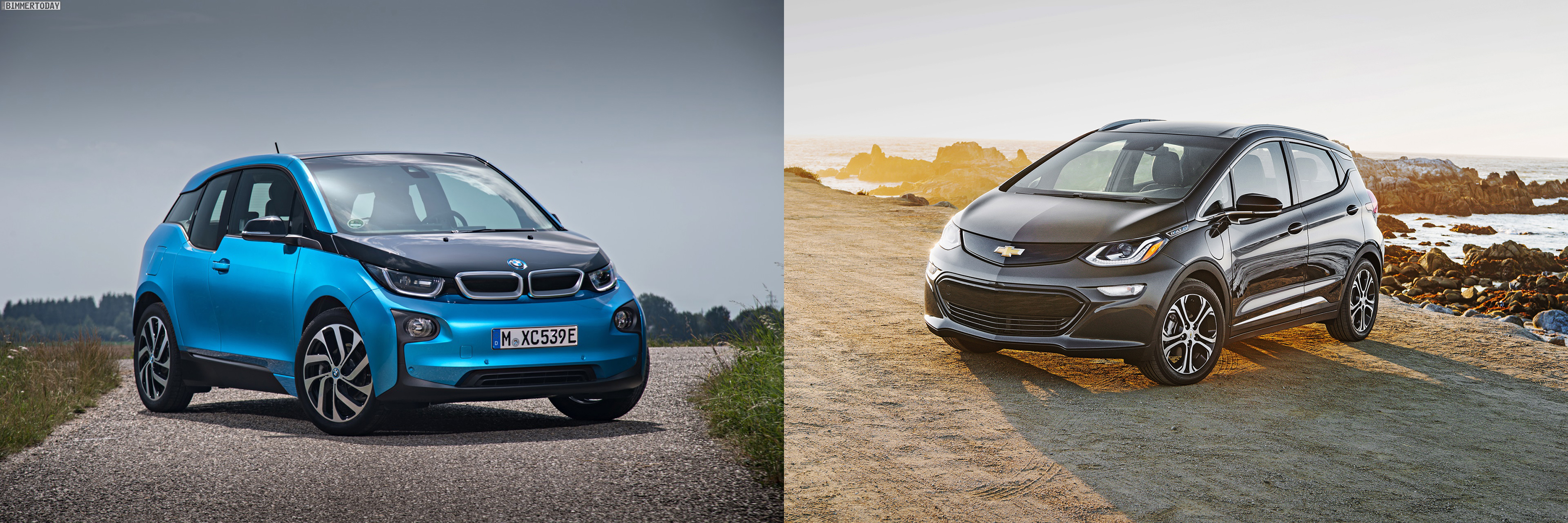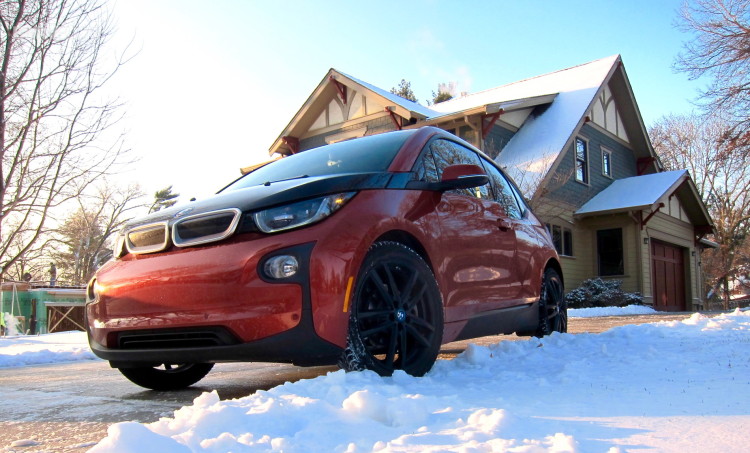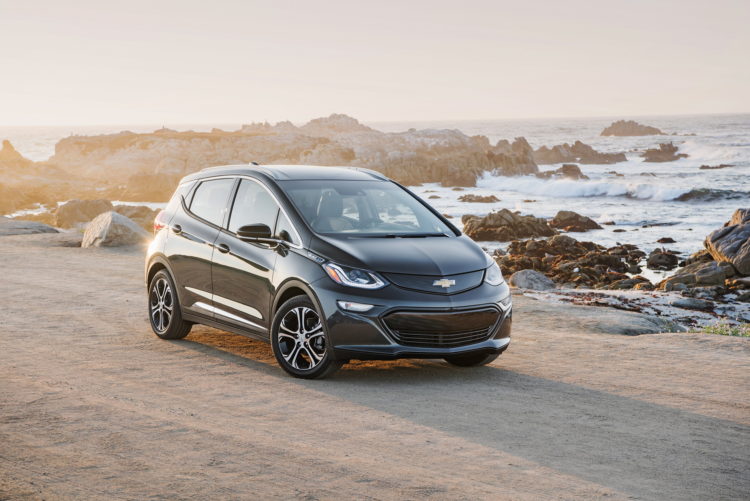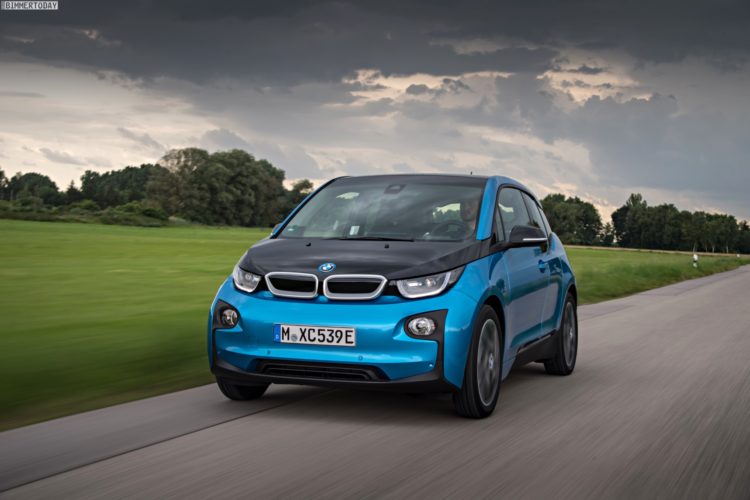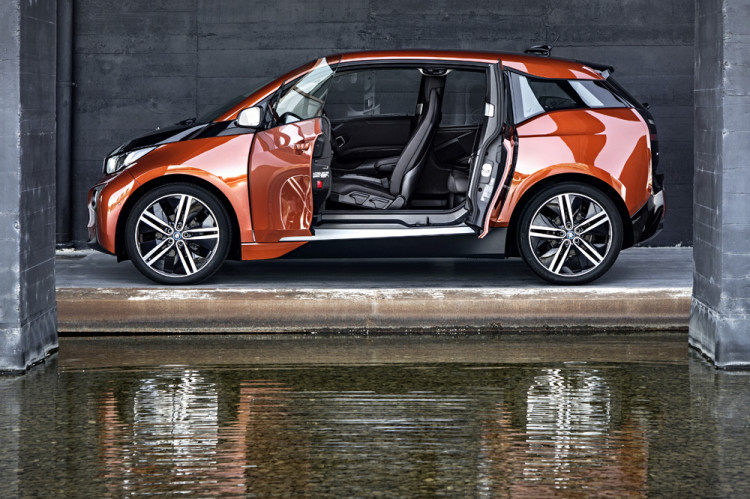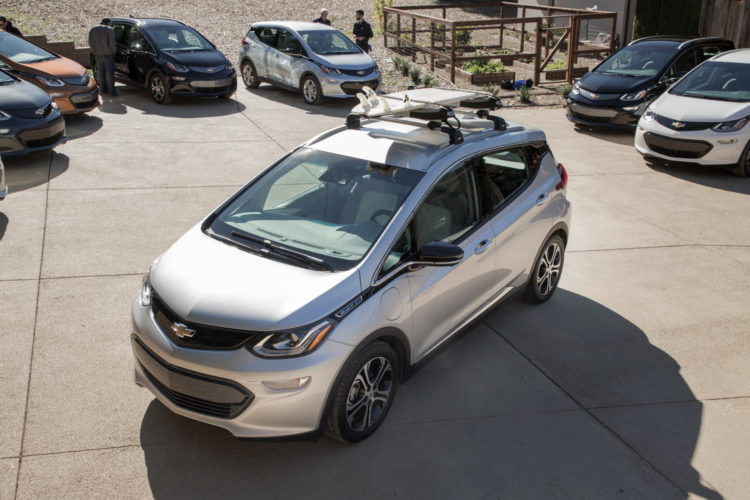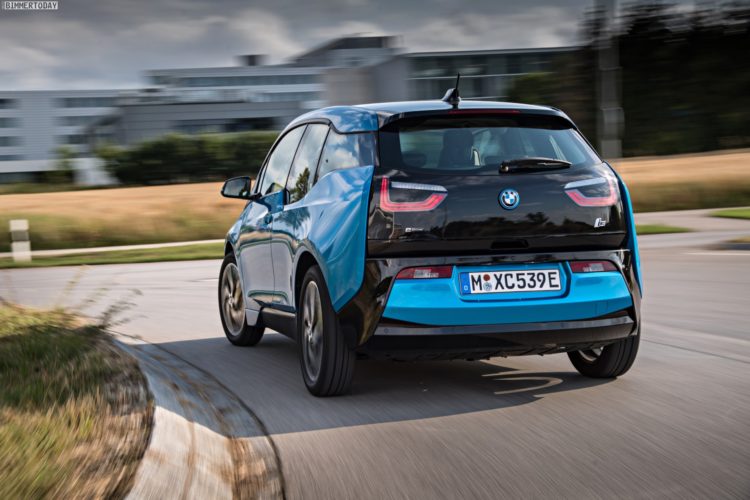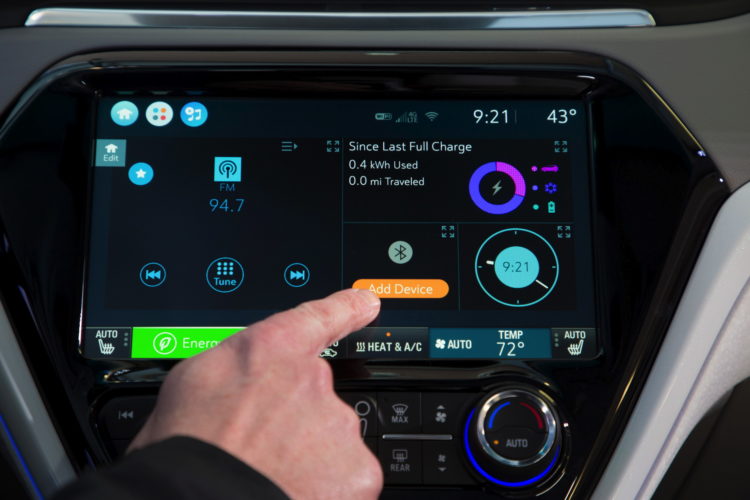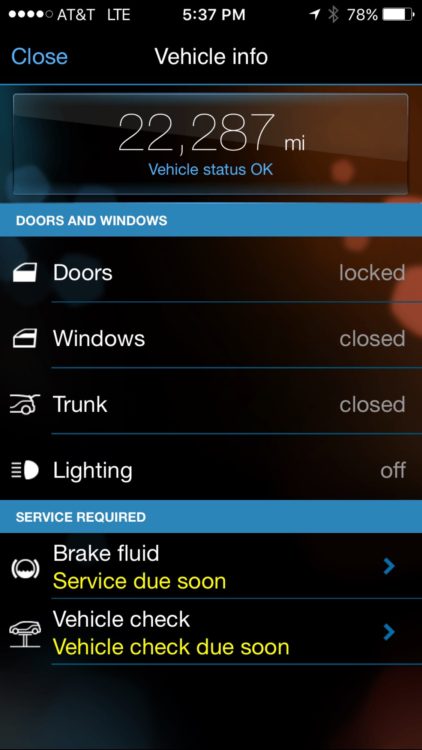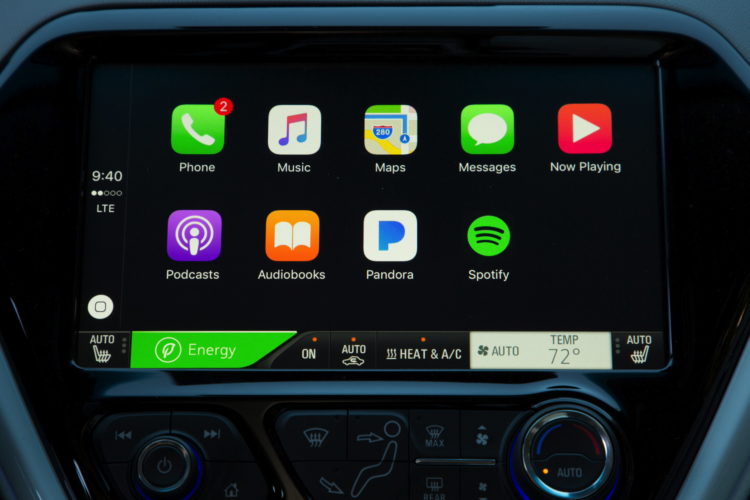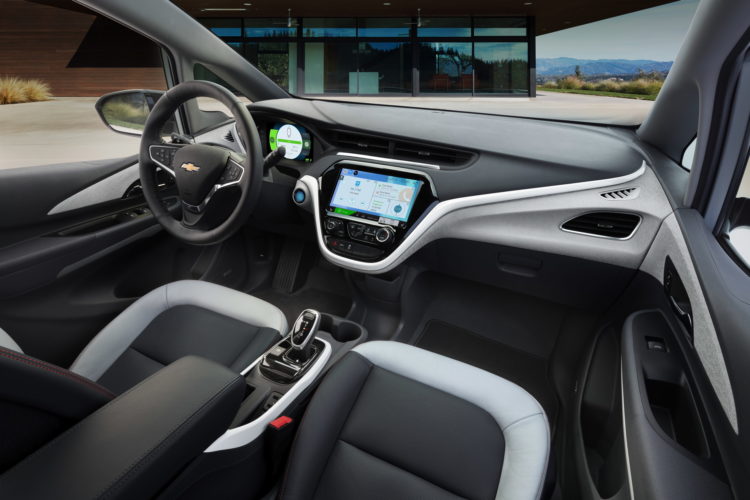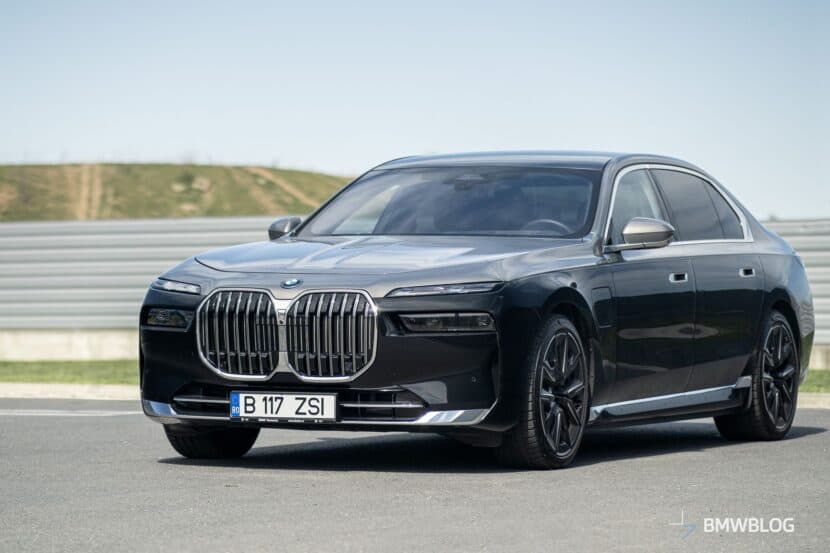When it was launched in 2014, the BMW i3 quickly became one of the most award winning electric vehicles collecting multiple awards including Green Car of the Year and UK Car of the Year. Fast forward to 2017, and the Bolt is the newest EV and it is racking up multiple awards fast, including Motor Trend Car of the Year, and 2017 North American Car of the Year. The Bolt even landed on Car and Driver’s 2017 Ten Best. Since 2014, the BMW i3 has been updated with an optional bigger battery pack. So how do these two stack up in a head to head comparison?
When people talk about electric vehicles the first two things they want to know are the cost and the range. Herein lies the biggest differences between the i3 and the Bolt. The BMW i3 has a 22 kWh battery pack standard and an 33 kWh optional, both are fitted with 96 cells. The 33 kWh pack has more energy dense cells, 94Ah vs the standard 60Ah version. The Bolt comes with a much larger 60 kWh battery pack composed of 288 cells, EPA rated at 238 mile range. CNET drove 240.4 miles on a full charge in the Bolt along California Highway 1 and remarkably had 17 miles of range left. I’ve owned a 22 kWh BMW i3 for over two years and 80 miles is a pretty solid estimate on a full charge. I’ve gone more if the weather is just right and less in the cold. The EPA rated range on the i3 33 kWh pack i3 is 114 miles.
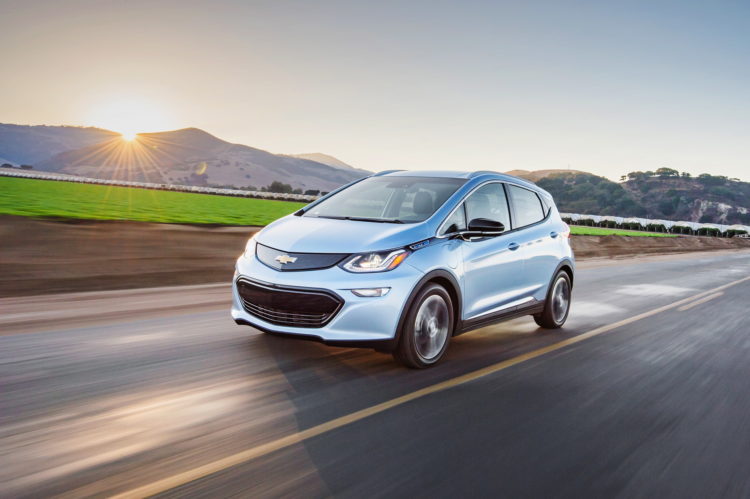
The Bolt Base MSRP is $37,495, factor in Federal Tax credit and you have the coveted 200+ mile range EV for less than $30,000. The Base MSRP for the i3 is $43,395 for the 22kWh version or $44,595 for the 33 kWh version. Shipping charges are included in as listed MSRPs.
The i3 and the Bolt are surprisingly similar. Both are compact five door hatchbacks and given their fold down rear seats, really rather practical. I’ve fitted a full size bass musical instrument in an i3 before and the Bolt’s cargo capacity is even bigger.
The i3’s rear suicide doors are a pain in tight parking spots though. The i3 practicality is some what hammered in that it can’t really fit roof racks on its smooth CFRP Roof.
The Bolt comes with a nice set up for roof racks.
Both EVs have the battery pack along the bottom of the car, though the Bolt packs extra cells up under the back seat too.
The i3 and the Bolt use electric motors that provide instant off the line acceleration and are a blast to drive. The i3 is rear-wheel drive, whereas the Bolt is front-wheel drive. As far as heating goes, the i3 BEV uses a heat pump for cabin heat, where the Bolt uses a traditional “toaster” style resistance heater. In the cold weather, the Bolt offers heated steering wheel, heated front and rear seats, whereas there is no heated steering wheel for U.S. BMW i3 customers and only the front seats are heated.
Regarding materials, the i3 is the first mass market car made from Carbon Fiber Reinforced Plastic and though the underbody and crash structure are metal alloy, the i3 overall is incredibly light weight at just 2900 lbs. The Bolt’s frame and body are made of more traditional steel alloy frame, and weighs in around 3600 lbs.
Perhaps the biggest surprise driving either one of these EVs is that they are both fun to drive. This is a huge improvement over early electric cars that were frequently compared to golf carts. Interestingly, the i3 always drives like an EV, meaning one pedal driving is the only mode the car comes with. With the Bolt, Chevrolet allows typical automatic transmission style driving, however bumping the gear lever down a second time, true one pedal EV driving is engaged. The Bolt does come with an interesting lever on the left side of the steering wheel that engages regen-braking. It is extremely easy to use, pull it and the car slows via regen braking at an enhanced pace.
The BMW on paper at least should be the most fun to drive because of the rear wheel drive nature of the car and the i3’s low, low curb weight. Combine this with instant torque, a quick turning radius and the i3 is a blast around town. BMW knows this and even highlighted the i3’s low speed handling prowess with an autocross during its international launch in Amsterdam. The disappointing part, is that these dynamics are gone on the highway.
The i3 gets blown around on even mild cross winds and can feel tipsy on the freeway if steering inputs are too quick. BMW i3 owners report that this goes away with putting after market springs on the car, but to me BMW shouldn’t make a car that doesn’t handle well on the freeway, even if it is designed as a “city car.” BMW is rumored to be coming out with an i3 S which I suspect will handle better.
The Bolt’s driving dynamics are almost the opposite of the BMW i3’s. Of the line it is very quick. In fact, the Bolt is quicker from 0-60 at 6.5 seconds compared to the i3’s 7.0 to 7.2s. The Bolt is a front wheel drive and under heavy acceleration can exhibit torque steer. The Bolt does have a longer wheel base and weighs about 600 lbs more than the i3. This translates into much better highway speed stability. The Bolt I drove on California Highways had no problem zipping along at 75 mph in heavy traffic. It is very stable and handled cross winds and quick steering inputs needed to zip in and out of traffic with aplomb. There was no tipsy nature to it like there is with the i3.
Technology
Both the i3 and the Bolt come with excellent smartphone apps that allow you to check on the state of the battery and the location. Both will allow you to turn on the cabin heater and precondition the car before departing on your journey. This is especially important in severe cold climates where you can use the power from the charger to warm the car and not use battery helping extend range. Expect both to be equally effected by severe cold and severe heat, as both extremes of temperatures stress batteries and make them less efficient.
The Bolt comes with a 4G LTE WiFi hotspot whereas the BMW i3 uses cellular data to locate, perform certain functions and update traffic but will not function as a WiFi hotspot. For navigation, the Bolt requires use of your smartphone’s Apple Car Play or Android Auto. Some may like this and some may not. You can use the Bolt’s WiFi hotspot to help keep data usage on your cell phone down, but the Bolts data costs extra beyond a free trial.
Both EVs require trips to the dealer to get updates as there are no over the air updates. Neither electric vehicle has a Head-Up Display, however I’ve used both cars navigation and both perform well. The i3 and the Bolt have two LCD screens – one for the instrument cluster and one for the navigation system, and they both customizable.
For the Bolt, I wish that Active Cruise Control was at least an option. In stop-and-go traffic in an electric vehicle with one pedal driving, I have found it invaluable. Though not standard in the i3, it is at least optional. For fast charging, DC charging is standard on the i3 versus optional on the Bolt. Standard 32 Amp charging will take about 9 hours to recharge a fully depleted Bolt battery pack which doesn’t lend itself well to road trips. Chevrolet tells me roughly 75 percent of the Bolts being shipped right now have DC charging spec’d. BMW made this mistake on the i3 when it was launched and then promptly made DC charging standard on all i3s.
The BMW i3’s materials are of a higher quality and the entire feel of the i3 is more head turning and futuristic.
With the Bolt, though Chevrolet shows you really can have a 200 mile+ range EV and not have to spend a ton to get it. Time and tide wait for no man, and in the EV realm, price and range are king. So in the comparison, the Bolt takes the crown. The Bolt has more twice the range and costs less, accelerates faster while carrying more. If you have a BMW i3, I wouldn’t sell it to buy a Bolt. However, if you are in the market for a new EV, I’d definitely take a long look at the 2017 Chevrolet Bolt.
This comparison keeps to the pure EV versions of the i3. There is a range extender i3, but this, obviously, has a gas tank and emissions sticker and is best compared to the Chevy Volt.


